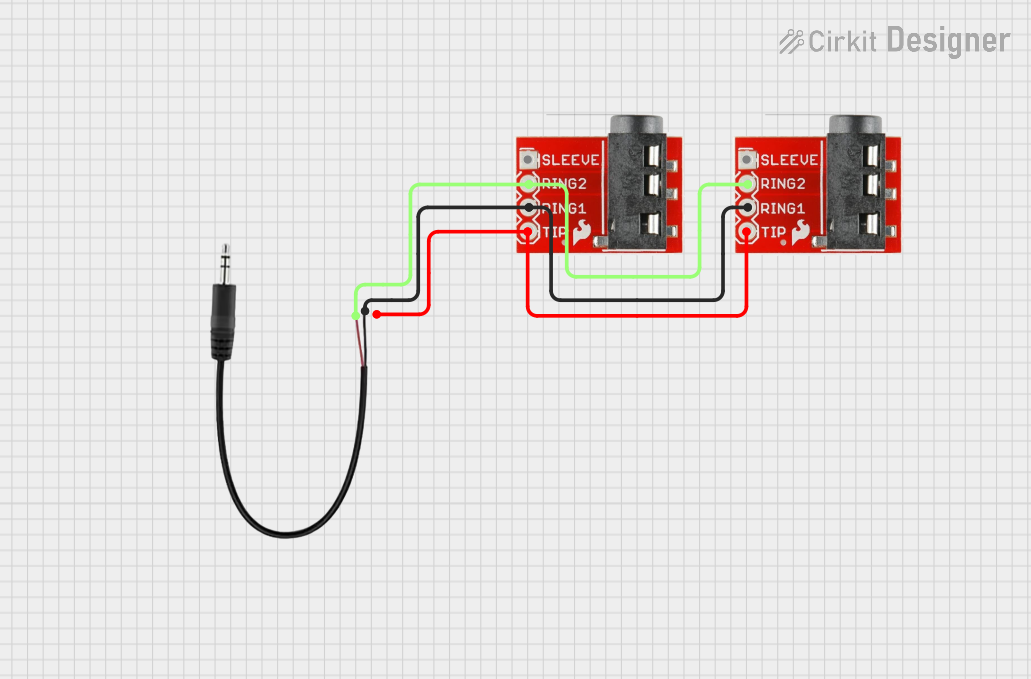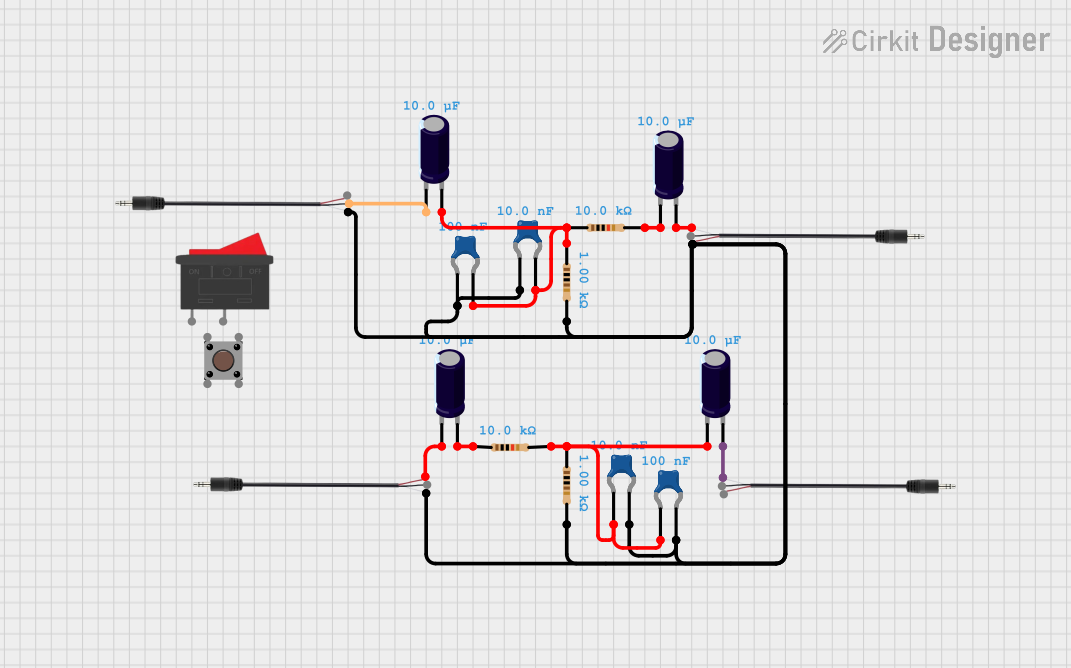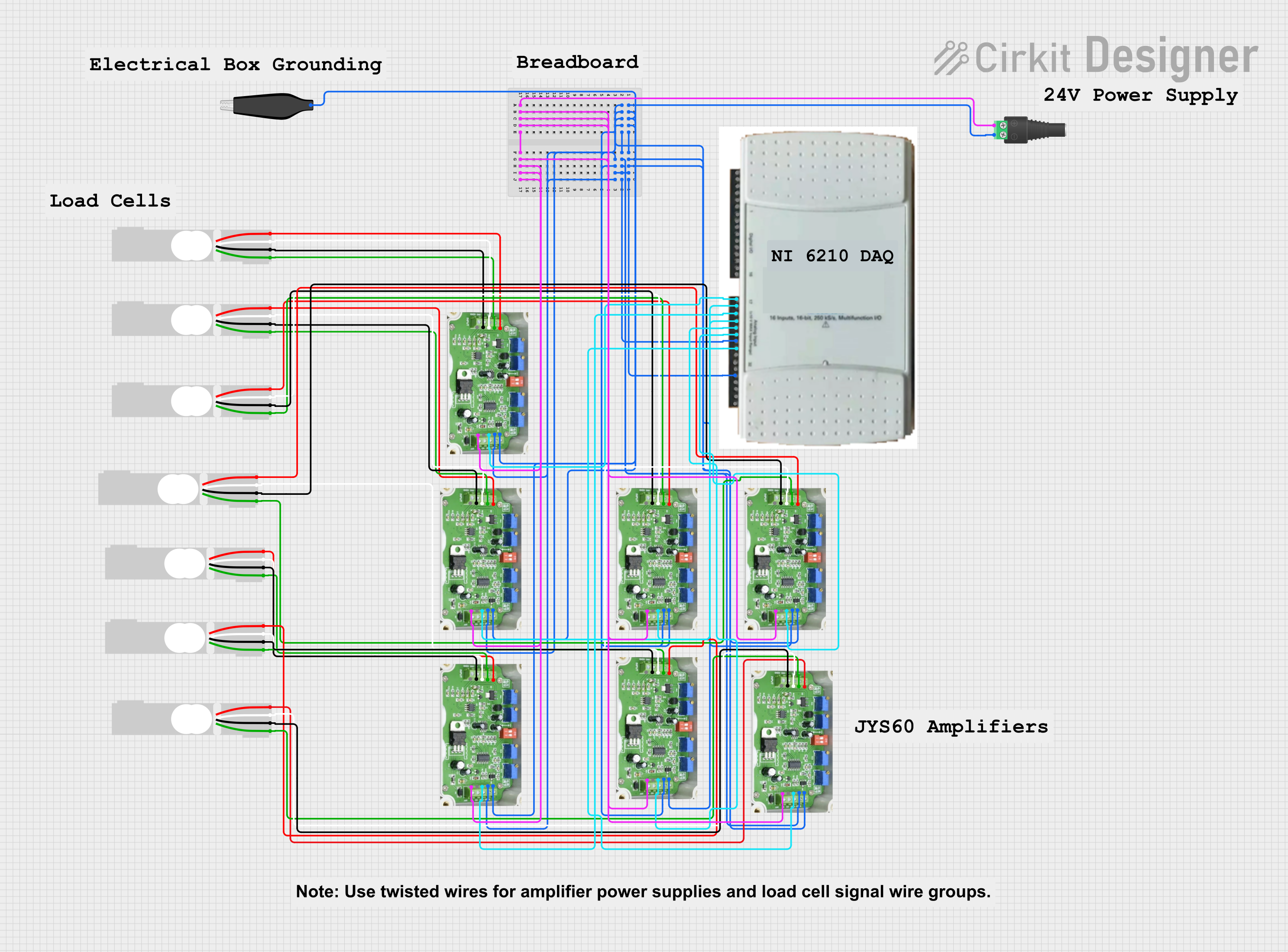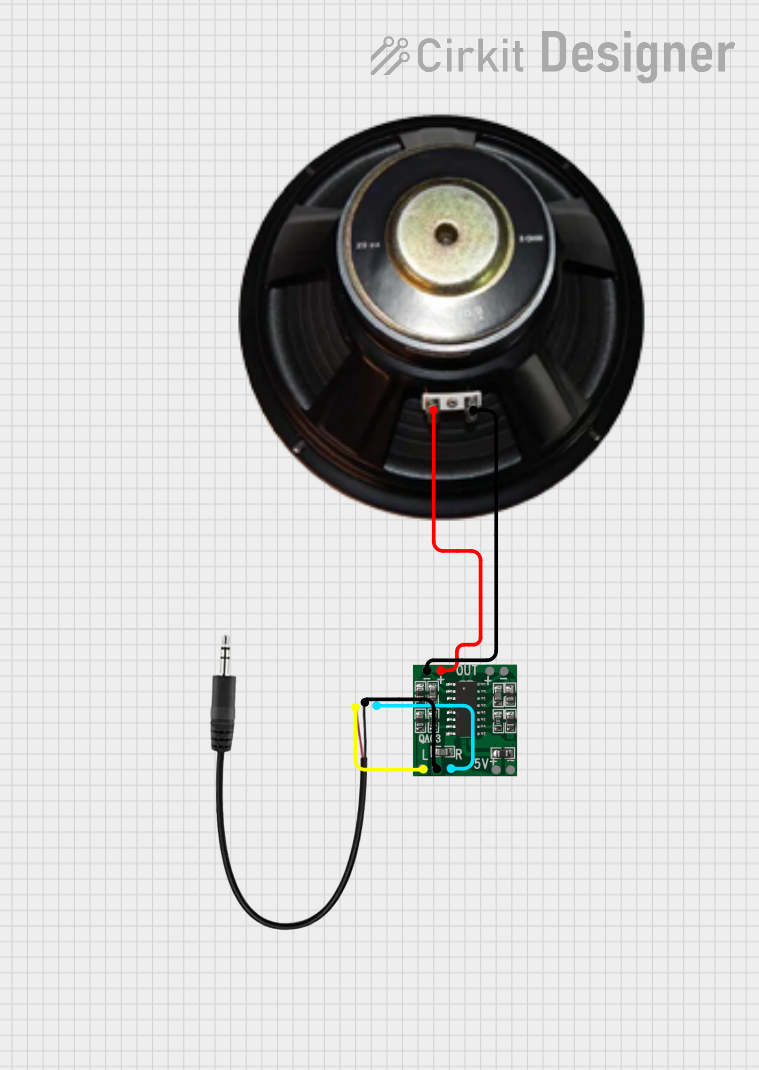
How to Use SJ1-355XNG Audio Jack: Examples, Pinouts, and Specs

 Design with SJ1-355XNG Audio Jack in Cirkit Designer
Design with SJ1-355XNG Audio Jack in Cirkit DesignerIntroduction
The SJ1-355XNG is a 3.5mm audio jack manufactured by Same Sky. It is a versatile and widely used component for audio signal transmission, commonly found in headphones, speakers, and other audio devices. This jack supports stereo sound, making it ideal for applications requiring high-quality audio output. Its compact design and robust construction make it suitable for both consumer electronics and professional audio equipment.
Explore Projects Built with SJ1-355XNG Audio Jack

 Open Project in Cirkit Designer
Open Project in Cirkit Designer
 Open Project in Cirkit Designer
Open Project in Cirkit Designer
 Open Project in Cirkit Designer
Open Project in Cirkit Designer
 Open Project in Cirkit Designer
Open Project in Cirkit DesignerExplore Projects Built with SJ1-355XNG Audio Jack

 Open Project in Cirkit Designer
Open Project in Cirkit Designer
 Open Project in Cirkit Designer
Open Project in Cirkit Designer
 Open Project in Cirkit Designer
Open Project in Cirkit Designer
 Open Project in Cirkit Designer
Open Project in Cirkit DesignerCommon Applications and Use Cases
- Headphones and earphones
- Portable speakers
- Audio amplifiers
- Media players and smartphones
- DIY audio projects
- Embedded systems requiring audio output
Technical Specifications
The SJ1-355XNG audio jack is designed to meet the needs of modern audio systems. Below are its key technical details:
Key Technical Details
- Manufacturer: Same Sky
- Connector Type: 3.5mm stereo audio jack
- Number of Contacts: 3 (Tip, Ring, Sleeve - TRS configuration)
- Mounting Style: Through-hole
- Rated Voltage: 12V DC
- Rated Current: 1A
- Contact Resistance: ≤ 30 mΩ
- Insulation Resistance: ≥ 100 MΩ
- Operating Temperature Range: -25°C to +85°C
- Durability: 5000 mating cycles
Pin Configuration and Descriptions
The SJ1-355XNG has three main pins corresponding to the TRS (Tip, Ring, Sleeve) configuration. Below is the pinout description:
| Pin Name | Description | Function |
|---|---|---|
| Tip (T) | Audio Left Channel | Transmits the left audio signal |
| Ring (R) | Audio Right Channel | Transmits the right audio signal |
| Sleeve (S) | Ground | Common ground for the audio signal |
Usage Instructions
The SJ1-355XNG audio jack is straightforward to use in audio circuits. Follow the steps below to integrate it into your project:
How to Use the Component in a Circuit
- Identify the Pins: Locate the Tip, Ring, and Sleeve pins on the audio jack. Refer to the pin configuration table above.
- Soldering: Secure the audio jack onto a PCB using its through-hole pins. Ensure proper soldering to avoid loose connections.
- Connect to Audio Source:
- Connect the Tip pin to the left audio channel output of your audio source.
- Connect the Ring pin to the right audio channel output.
- Connect the Sleeve pin to the ground of your circuit.
- Test the Connection: Plug in a compatible 3.5mm audio plug and test the audio output to ensure proper functionality.
Important Considerations and Best Practices
- Avoid Overloading: Do not exceed the rated voltage (12V DC) or current (1A) to prevent damage.
- Proper Grounding: Ensure the Sleeve pin is connected to the circuit ground to avoid noise or interference.
- Durability: While the jack is rated for 5000 mating cycles, handle it with care to maximize its lifespan.
- PCB Design: When designing a PCB, ensure the mounting holes align with the jack's dimensions for a secure fit.
Example: Connecting to an Arduino UNO
The SJ1-355XNG can be used with an Arduino UNO for audio output. Below is an example of how to connect it to a simple audio circuit:
Circuit Description
- The Tip and Ring pins are connected to two PWM output pins of the Arduino (e.g., pins 9 and 10).
- The Sleeve pin is connected to the Arduino's GND.
Arduino Code Example
/*
Example: Generating simple audio tones using SJ1-355XNG audio jack
- Pin 9: Left audio channel (Tip)
- Pin 10: Right audio channel (Ring)
- GND: Sleeve (common ground)
*/
int leftChannel = 9; // PWM pin for left audio channel
int rightChannel = 10; // PWM pin for right audio channel
void setup() {
pinMode(leftChannel, OUTPUT); // Set left channel as output
pinMode(rightChannel, OUTPUT); // Set right channel as output
}
void loop() {
// Generate a tone on the left channel
analogWrite(leftChannel, 128); // 50% duty cycle (mid-level tone)
delay(500); // Wait for 500ms
// Generate a tone on the right channel
analogWrite(rightChannel, 128); // 50% duty cycle (mid-level tone)
delay(500); // Wait for 500ms
// Turn off both channels
analogWrite(leftChannel, 0);
analogWrite(rightChannel, 0);
delay(500); // Wait for 500ms
}
Troubleshooting and FAQs
Common Issues and Solutions
No Audio Output
- Cause: Incorrect pin connections.
- Solution: Verify that the Tip, Ring, and Sleeve pins are connected to the correct audio source outputs and ground.
Distorted Sound
- Cause: Poor soldering or loose connections.
- Solution: Inspect the solder joints and ensure all connections are secure.
Noise or Interference
- Cause: Improper grounding or external interference.
- Solution: Ensure the Sleeve pin is properly grounded and use shielded cables if necessary.
Jack Not Fitting Properly
- Cause: Mismatched plug size or damaged jack.
- Solution: Use a standard 3.5mm plug and inspect the jack for physical damage.
FAQs
Q: Can the SJ1-355XNG handle mono audio signals?
A: Yes, it can handle mono signals by connecting the Tip and Ring pins together to the single audio channel.Q: Is the SJ1-355XNG compatible with TRRS (Tip-Ring-Ring-Sleeve) plugs?
A: No, the SJ1-355XNG is designed for TRS (Tip-Ring-Sleeve) plugs and may not work correctly with TRRS plugs.Q: Can I use this jack for microphone input?
A: The SJ1-355XNG is primarily designed for audio output. For microphone input, consider using a jack specifically designed for that purpose.
By following this documentation, you can effectively integrate the SJ1-355XNG audio jack into your projects and troubleshoot any issues that arise.